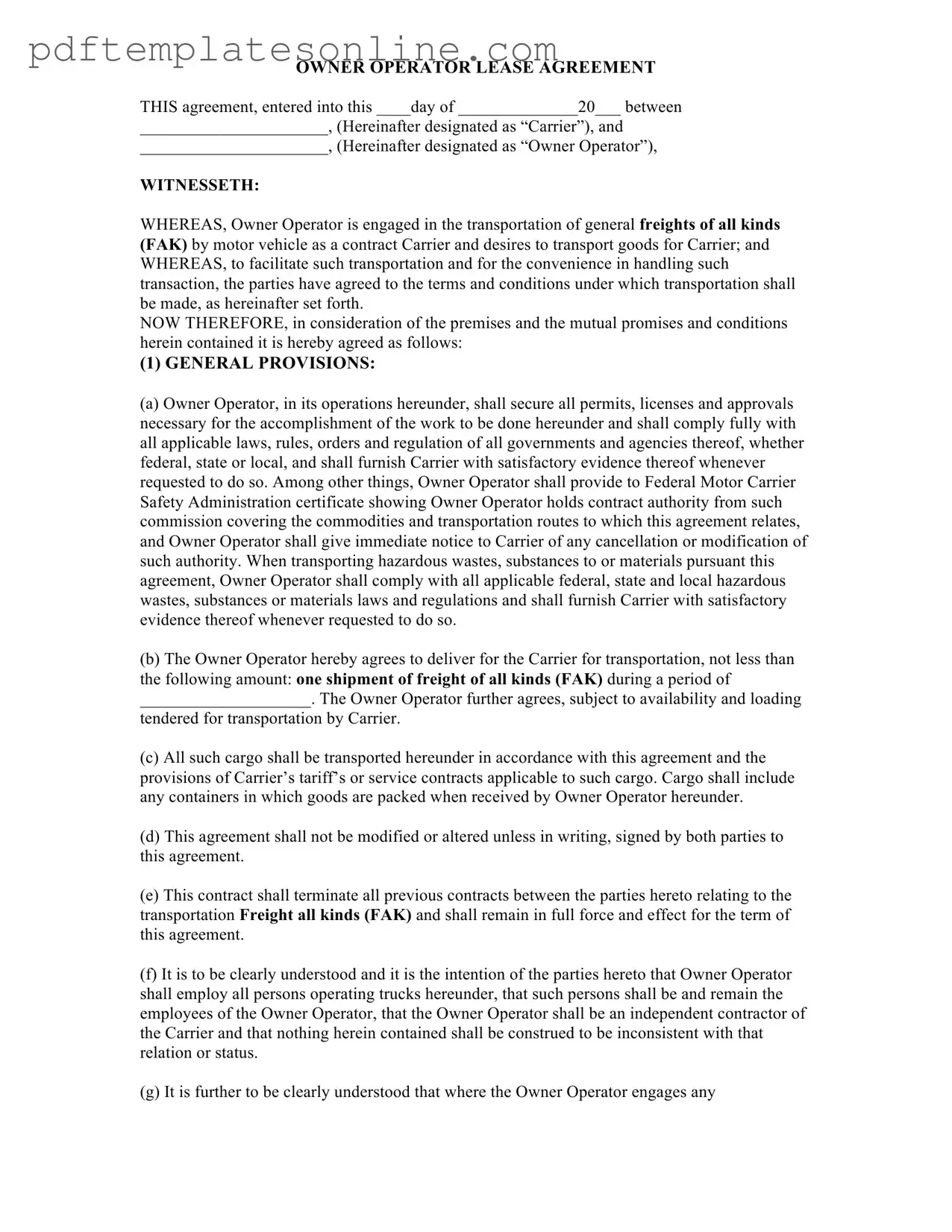Misconception 1: The Owner Operator Lease Agreement is the same as an employment contract.
Many believe that this agreement creates an employer-employee relationship. In reality, it establishes an independent contractor status for the Owner Operator, meaning they operate their own business.
Misconception 2: The Owner Operator is responsible for all liabilities without any support.
This is not entirely true. While the Owner Operator does assume significant liability, the Carrier also has responsibilities and obligations to support the Owner Operator, especially regarding compliance and insurance.
Misconception 3: The Owner Operator can modify the agreement without Carrier's consent.
Changes to the agreement require written consent from both parties. This ensures that all modifications are formally acknowledged and agreed upon.
Misconception 4: The Owner Operator can transport any type of cargo without restrictions.
Owner Operators must adhere to specific terms regarding the types of cargo they can transport. This includes compliance with federal and state regulations, especially for hazardous materials.
Misconception 5: The Owner Operator does not need to provide any proof of insurance.
This is incorrect. The Owner Operator must maintain adequate insurance coverage and provide proof to the Carrier, ensuring compliance with legal requirements.
Misconception 6: The Carrier is responsible for all payments and benefits for Owner Operator’s employees.
In fact, the Owner Operator is responsible for their own employees. The Carrier's obligations are limited to their own employees and subcontractors.
Misconception 7: The Owner Operator can assign the contract to someone else without permission.
This is a misunderstanding. The contract explicitly states that the Owner Operator cannot assign their rights or obligations without the Carrier's written consent.
Misconception 8: The terms of the agreement can be disclosed freely to third parties.
This is not allowed. The Owner Operator must keep the terms of the agreement confidential and cannot disclose them without prior written consent from the Carrier.
